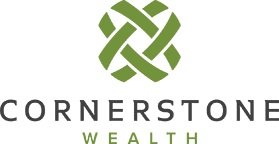4 Strategies to Consider When Setting Up Employee Retirement Plans
How to Choose Employee Retirement Plans
Offering defined contribution plans to employees is more than just a financial decision; it's a strategic move that can significantly enhance your business's appeal. Retirement plans are essential for attracting and retaining top talent; showcasing your commitment to your employees' long-term financial well-being. By providing retirement benefits, you demonstrate that you value your employees for their current contributions and future security.
Advantages for Business Owners
Offering retirement plans has manifold advantages for business owners. First, they play a crucial role in improving employee satisfaction and retention. A 2016 Pew survey of small employers found that 89% of firms that offer a retirement plan agreed that their plan helps them hire and retain workers. This statistic underscores the value that employees place on retirement benefits and how they can help stabilize your workforce.
Additionally, offering retirement plans comes with significant tax benefits. Employer contributions to retirement plans are generally tax-deductible, thus reducing your overall tax liability and making your investments in employee benefits more cost-effective. Moreover, certain retirement plans offer flexible contribution options, allowing you to adjust contributions based on your company's financial performance.
Four Retirement Plan Strategies for Your Employees
In this blog, we will explore four primary strategies for setting up employee retirement plans: Simplified Employee Pension (SEP) IRAs, Savings Incentive Match Plan for Employees (SIMPLE) IRAs, Profit-Sharing Plans, and Solo or Individual 401(k)s. Each option offers unique benefits and considerations, making it essential to understand which aligns best with your business needs and goals.
Understanding Simplified Employee Pension (SEP) IRAs
What is a SEP IRA?
A Simplified Employee Pension (SEP) IRA is a type of retirement plan specifically designed for small business owners and self-employed individuals. It offers a straightforward and flexible way to contribute towards employee retirement savings without the complexity associated with other retirement plans.
The key benefit of a SEP IRA is its simplicity in setup and administration, making it an attractive option for small businesses that might need more resources to manage more complex plans.
Contribution Limits and Flexibility
One of the standout features of a SEP IRA is its high contribution limits. Employers can contribute up to 25% of an employee's income or $69,000 for 2024 (whichever is less), which allows for significant retirement savings potential. Additionally, contributions are discretionary and can be adjusted based on the business's financial health each year. This means that in years of profit, contributions can be maximized, while in leaner years, they can be reduced or skipped altogether.
Tax Benefits with a SEP IRA
SEP IRAs offer robust tax advantages for both employers and employees. For employers, contributions are tax-deductible, reducing overall taxable income. Despite these benefits, a survey by the Employee Benefit Research Institute revealed that 72% of small business owners were unaware of available tax credits to help offset the startup costs of launching a new retirement plan.
Employees' contributions are tax-deferred, meaning they won’t pay taxes on the contributed amounts until they withdraw the funds during retirement, similar to defined benefit plans where the benefits are calculated based on factors like salary history and duration of employment.
Pros and Cons of a SEP IRA
When considering a SEP IRA, it is essential to weigh its advantages and limitations. On the plus side, SEP IRAs are relatively easy to set up and administer, making them ideal for small business owners. The high contribution limits also allow for substantial retirement savings. However, there are some downsides. For example, employees cannot make their own contributions to the plan—only the employer can. This can also limit the overall retirement savings potential compared to plans where employees contribute.
SIMPLE IRAs
Overview of SIMPLE IRAs
A Savings Incentive Match Plan for Employees (SIMPLE) IRA is a retirement savings plan tailored for small businesses and self-employed individuals, and it is one of the many options available under defined contribution plans, in contrast to defined benefit plans.
SIMPLE IRAs provide a cost-effective way for small businesses to offer retirement benefits, featuring a straightforward setup and minimal administrative burden.
Contribution Structure
The contribution structure for SIMPLE IRAs involves both employer and employee contributions. Employees can defer parts of their salaries, with limits set at $16,000 for 2024 and an additional $3,500 for those aged 50 or older.
Employers must match employee contributions dollar-for-dollar up to 3% of the salary or make a fixed 2% non-elective contribution for all eligible employees, irrespective of their eligibility for other retirement plans or their contributions.
Tax Implications with a Simple IRA
SIMPLE IRAs come with significant tax benefits, provided the eligibility requirements are met. Employees enjoy pre-tax contributions, reducing their annual taxable income and allowing funds to grow tax-deferred until retirement.
Employers can deduct their contributions as a business expense, thus reducing their overall taxable income. This provides mutual incentives for both parties to participate actively in the plan.
Pros and Cons of a SIMPLE IRA
SIMPLE IRAs are beneficial due to their simplicity, cost-effectiveness, and role in building investments, making them ideal options for small businesses. Mandatory employer contributions ensure employees' benefits, promoting financial security even if employees do not contribute. However, the lower contribution limits compared to SEP IRAs may restrict overall retirement savings potential. Additionally, once established, employers must contribute annually, regardless of the company's financial condition.
Profit Sharing Plans
What are Profit Sharing Plans?
Profit-sharing plans let employers contribute a portion of their company’s profits to employee retirement accounts. These highly adaptable plans allow employers to decide how much to contribute each year based on the company's financial performance. This flexibility makes
profit-sharing plans attractive to businesses. They want to reward employees and connect their savings to the company's success.
Flexibility in Contributions
A key benefit of profit-sharing plans is their flexibility. Employers can contribute up to 100% of an employee's compensation, capped at $69,000 for 2024. Contributions can vary yearly depending on the company's profitability, allowing businesses to manage their financial commitments while offering competitive retirement benefits.
Tax Benefits for Profit-Sharing Plans
Profit-sharing plans offer considerable tax advantages. Employer contributions are tax-deductible, reducing the company’s taxable income. Additionally, these contributions are exempt from Social Security or Medicare taxes. For employees, contributions grow tax-deferred until withdrawal during retirement, creating a powerful incentive for long-term savings.
Pros and Cons of a Profit-Sharing Plan
The main advantage of profit-sharing plans is their alignment with the company's success. When the business does well, employees benefit directly, motivating them to contribute to its growth. Flexibility in contribution amounts also helps companies to manage financial commitments. Also, it is important to note that profit-sharing plans have the opportunity to convert to 401(k) plans if employees can defer their own money. However, calculating contributions can be complex, and professional guidance is strongly encouraged to ensure IRS compliance. Additionally, the success of a profit-sharing plan is tied to the company’s profitability, which can fluctuate from year to year.
Solo or Individual 401(k) Plans
Overview of Solo 401(k)s
Solo or Individual 401(k) plans are designed specifically for self-employed individuals and small business owners who have no employees other than a spouse. These plans allow individuals to contribute as both employer and employee, maximizing retirement savings while maintaining simplicity in plan administration.
Contribution Limits and Benefits
Solo 401(k)s offer one of the highest contribution limits among small business retirement plans. For 2024, employees can contribute up to $23,000, with an additional catch-up contribution of $7,500 for those aged 50 or older. As the employer, contributions can be up to 25% of the employee’s compensation, with the total contribution limit (employee and employer combined)
capped at $69,000 for 2024. These generous limits allow for significant retirement savings, which are particularly beneficial for high-earning self-employed individuals.
Tax Implications
Solo 401(k)s provide substantial tax benefits. Contributions are tax-deductible for the employer, reducing taxable income. For employees, the funds grow tax-deferred until they are withdrawn during retirement. Additionally, Solo 401(k)s allow for Roth contributions, which are made with after-tax dollars but grow tax-free, offering tax diversification.
Pros and Cons
The primary advantages of Solo 401(k) include high contribution limits and flexible investment options. Participants can also take loans against their Solo 401(k) balances, offering financial flexibility. However, these plans can be more complex to set up and maintain than other options, such as SEP or SIMPLE IRAs, often requiring more administrative work and compliance with IRS regulations.
Key Considerations When Building Retirement Plans
Tailoring the Right Plan
Choosing the right retirement plan requires considering your business size, employee needs, and overall financial goals. For small businesses with few employees, SEP IRAs or SIMPLE IRAs are often suitable due to their simplicity and lower administrative burden.
Solo 401(k)s are ideal for self-employed individuals without employees, providing high contribution limits and broad eligibility criteria. For larger businesses, profit-sharing plans offer flexibility in contributions based on company profits, ensuring you can reward employees while aligning with business success.
Compliance and Administrative Ease
Ensuring compliance with IRS regulations is crucial for maintaining the tax-advantaged status of retirement plans. Regularly review plan documents and update them to reflect business or regulatory environment changes. Simplify administration using automated payroll integration, ensuring accurate and timely contributions.
Professional guidance is vital to navigating the complexities of retirement plan laws' and keeping up with compliance testing, such as nondiscrimination testing for 401(k) plans.
Long-Term Benefits
Offering retirement plans provides long-term benefits for both your company and employees. For employees, it promotes financial security and retirement readiness, enhancing their job satisfaction and loyalty. For the business, it can improve employee retention, reduce turnover costs, and provide tax benefits through deductible contributions. Additionally, contributing to employee retirement plans can foster a positive company culture, showing that you value your employees’ future, ultimately driving business success.
Taking Care of Your Employees and Yourself
In summary, SEP IRAs, SIMPLE IRAs, Profit-Sharing Plans, and Solo 401(k)s each offer unique benefits tailored to various business needs. SEP IRAs and Profit-Sharing Plans provide flexibility and high contribution limits, making them suitable for maximizing retirement savings. SIMPLE IRAs are cost-effective and straightforward for small businesses with mandatory contributions. Solo 401(k)s are ideal for self-employed individuals, offering high limits and additional benefits like loan options.
A survey by Fidelity revealed that 85% of self-employed/microbusiness owners know they should be saving more for retirement, yet 75% are still determining if they're saving enough, and 42% worry they will never be able to retire.
Connect with a Cornerstone Retirement Plan Expert
Don't let uncertainty stall your retirement planning. Take the first step towards securing your future and that of your employees. Learn more about retirement plans for your employees by visiting our page. Schedule a consultation with a Cornerstone advisor today for personalized retirement plan advice tailored to your business needs.
This is for informational purposes only and does not serve as personal financial advice. Please speak to a qualified representative regarding your unique circumstances. Links within this blog are not associated to Cornerstone Wealth and are subject to change. Hyperlinks will take you to a third-party website whose content Cornerstone Wealth does not control. Investment advisory services offered through Cornerstone Wealth Group, LLC dba Cornerstone Wealth, an SEC registered investment adviser

